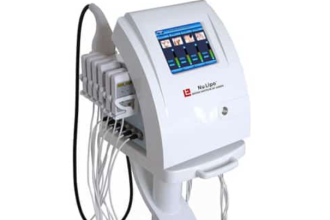Vision fades quietly. It just goes without loud symptoms. The changes sneak in like a thief in the night. One day, you’ll just notice that the cinema screen is a little blurry than what it’s used to be.
Many people disregard eye checkups because nothing feels wrong. However, this neglect sets the stage for bigger problems.
Most adults don’t realize how much their vision can change in a short time. Routine exams help catch those subtle changes early.
The Truth About “No Symptoms, No Problem”
One of the most common reasons people skip eye exams is because they feel fine. Vision seems sharp enough. Glasses still do the job.
However, eye conditions like glaucoma develop silently. They take place without paid or visual distortion. Conditions like glaucoma and early-stage macular degeneration often develop without noticeable pain or visual distortion.
By the time symptoms appear, the damage may be harder to reverse. Regular exams are your insurance. People who work long hours on digital screens or drive frequently at night are more prone to such damage. Eye exams track slow changes over time and keep baselines up to date.
Even a slight drop in contrast sensitivity or night vision can affect reaction time. Routine exams help prevent that slow slide into discomfort or risk.
What’s the Best Frequency for Eye Exams?
Healthy adults under 60 should be checked at least once a year. That changes depending on family history, medical conditions, or if vision correction is already being used. Diabetics and those with high blood pressure should aim for annual checks due to their added risk of eye complications.
Children need more frequent monitoring in their early school years, and those over 60 may benefit from annual visits even if their glasses prescription hasn’t changed much.
Here’s when to consider booking sooner than planned:
- Vision feels off or blurry—even slightly
- Headaches appear more frequently near the end of the day
- Night driving becomes uncomfortable
- Existing glasses or contacts don’t seem to cut it anymore
- Screens cause more eye strain than usual
Vision Shouldn’t Be an Afterthought
It’s easy to forget about scheduling when the calendar fills up fast. Work, school, kids, errands—none of them politely step aside to make room for an eye check. That’s why it helps to time appointments around predictable life events.
Some people pair them with their annual physicals or use birthdays as a reminder. Others schedule right before the new school year starts to give kids a fresh start. Sticking to a cycle that makes sense for the household cuts down on missed years.
A quick reminder on the phone calendar or email can help jog the memory. Some clinics offer automatic texts, which is even better. Once that first habit is locked in, staying on schedule becomes easier with each round.
Look for Subtle Vision Changes, Even Between Exams
Eyesight can shift in the gaps between appointments. Some changes are so minor they’re easy to explain away. However, they quickly pile up.
Keep an eye out for things like:
- Needing brighter light to read comfortably
- Rubbing the eyes more often by late afternoon
- Noticing increased glare from anything bright
- Feeling tension around the temples when concentrating
These shifts don’t always mean a prescription change. Sometimes, it’s dryness or fatigue that needs to be addressed. But noting them early can help during the next visit, giving the optometrist better insight into what’s really changed.
Your Location Can Shape the Routine Too
Community matters when it comes to healthcare habits. In growing suburbs and busy hubs, clinics may have longer waitlists or book out during school holidays. Planning ahead is worth it to avoid the scramble.
An eye doctor in Marietta GA might suggest booking the next exam before even leaving the clinic to lock in a preferred time. That little move keeps the routine rolling without requiring a second thought later.
Some clinics also group family appointments close together so everyone gets checked without repeat visits. That works well for parents juggling multiple school and work schedules.
Routine Doesn’t Mean Reactive
The goal of regular eye exams isn’t to chase down problems. It’s to stay ahead of them. When scheduling is intentional and spaced properly, the eyes stay comfortable and reliable—without the surprise of finding out something’s been missed for too long.
Vision doesn’t need to be perfect to be protected. Just seen on time.













